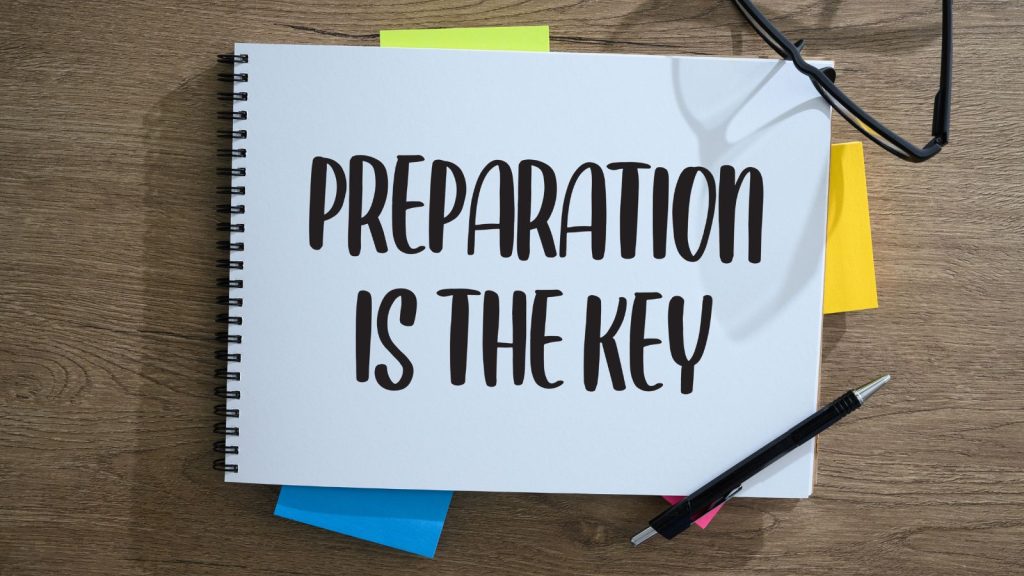Tradeshows can be a great way for new companies to gain traction and to network with a gathering of an entire industry in a few days. Nothing is better than face-to-face contact, and this type of direct marketing is old school but people still do it because it has a very high ROI. Different strategies can be implemented like whether to invest in a booth to take advantage of a high traffic area, or “walking the show” to gather information, networking, and making contacts. You may want to chose what’s best for your position in the industry. Here are some great tips to help you get the most out of a trade show by using your correspondence to your company’s advantage, and running and effective booth.

PLANNING & PREPARATION:
Being prepared with a plan and objectives to reach is as important as having the right business correspondence in any part of a trade show. Whether you are a manufacturer or a start up introducing a new product carrying sell sheets, brochures and business cards in a organized fashion is a must!
One strategy I like is splitting the sales presentation team up to cover different areas of the show- two people should be at the booth at all times and between 1-3 people should be walking the show, attending workshops and doing individual presentations (at appointments)- these people should rotate to break up monotony. It’s very rare for a company to send two teams to a show. Instead the same small group of staff members have to pull double-duty at the trade show, acting as both booth staff and gathering relevant information. Mapping out specific booths of companies you want to see and make priorities to use your time visiting accordingly- if there is a vender booth map use it accordingly to create a route.
CORRESPONDENCE:
Making sure you and the rest of your team has enough correspondence to last the entire show-
• If you are a manufacturer have your spec sheets out
• If you are introducing a new product, spec sheets are must
• If someone asks for a full line, also have your catalogs
• Ask them to register before you give out your catalog. This will make sure you are not wasting your copies. Make registration easy by having an online form ready for them on your company website. This also makes it easy for sales staff to follow up.
• A great old school tip is to keep your business cards in your right pocket and the business cards of people you’ve met in your left pocket.

NOTES, NETWORKING, & COLLECTION:
Collect the information that is of interest to you, or that could be valuable to others in your company. Many exhibitors will gladly mail literature and samples, which relieves you of having to carry them around the exhibit hall. Use a small notebook to record the most vital information. If you are only taking the most valuable information it will be easier to stay organized.
Be social (media). These networks exist so take advantage of them! Tweet about the conference using the official hash tags, connect and tweet with other vendors! “join the conversation!” By using the official hashtags of the conference/trade show your tweets might end up in the top tweets of the hashtag. It is great free publicity for your company!
Industry leaders attend and often speak at trade shows, and they’re great people to know. Be social at workshops, you never know when your could meet someone important whether its in the hotel elevator, at a workshop, or at one of the many booths you might visit during your networking route.
FOLLOWING UP
Following up with contacts that you have made as soon as possible. The leads generated at a trade show should be carefully tracked because they are a direct gauge of a company’s ROI, following up is crucial. Research has suggested that the majority of leads generated by trade shows never receive follow-up by company representatives. A 2010 study concluded that fewer than 70 percent of exhibitors have any formalized plan or process in place for how leads are followed up after the show. Maybe having the technology to create automated lead nurturing is convenient but that doesn’t make it the best option. Blasting every trade show lead with the same, tired email message instantly upon your return to the office will likely get you ignored.
Instead have the campaign designed and ready to launch so that response emails can go out immediately upon leads entering the system. A prompt, professional, tailored response is a great way to make your company stand out from the competition who may take days or weeks to respond. Make sure that your email is designed to drive action, not just spread the gospel about your new product. Example: rather than saying “to learn more” or “for more information.” Instead, provide the prospect specific, tangible options for engaging with your company: “download our free white paper,” “request a personal demo,” “watch our 3-minute overview video.” It shows them the next step!

QUICK TIPS ON RUNNING A BOOTH:
• The presentation of your product at the trade show is an important step whether you are selling product directly to new customers, or gather information for potential leads. Make sure the presentation is seamless and keep people’s attention and focus.
• Be approachable, push the table back against the booth wall if you have a table and stand up, be ready! Being out in front of the table helps divert traffic to the booth, rather than being behind the table and yelling out to people (creating traffic).
• Touching on the ‘cool features’ makes your product memorable and grabs attention. When you walk through a trade show with 100 different booths, every one of them has promises, and benefits they want to highlight. At the end of the day it all blurs together but you might remember specific cool features about one or two products. Be one of those memorable cool features!
• The best place to meet prospects is not in the booth. Take your material and head out to the lounge area. Your prospects will be there with their guard down.
CONCLUSION:
Hopefully you are able to put these tips to good use this year for shows and conferences you attend. Trade shows can be overwhelming and there is a ton of information out there on how to do it right. We have tried streamline this list of tips based on our own experiences in trade shows as sales people, attendees, and vendors, to help you make the most of your time at trade shows in 2016.





